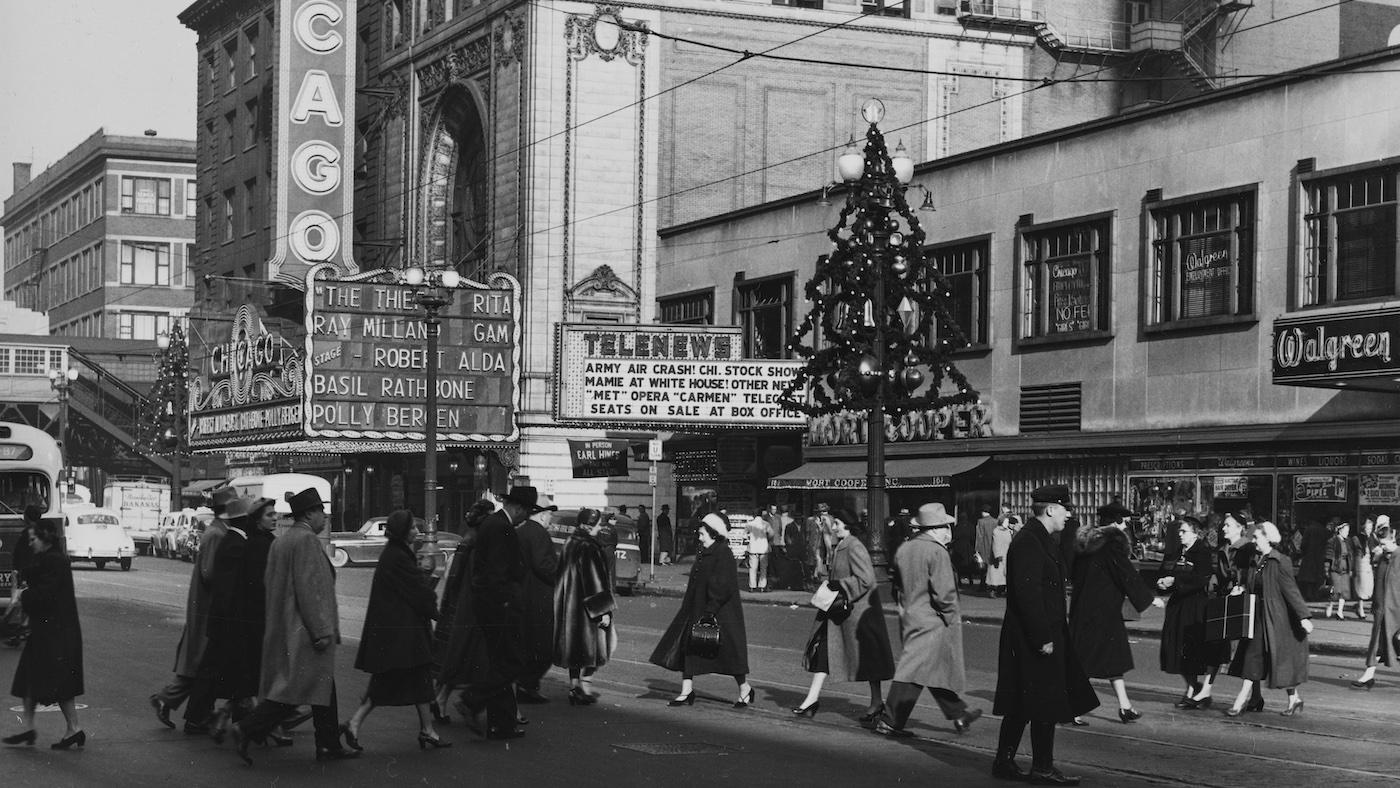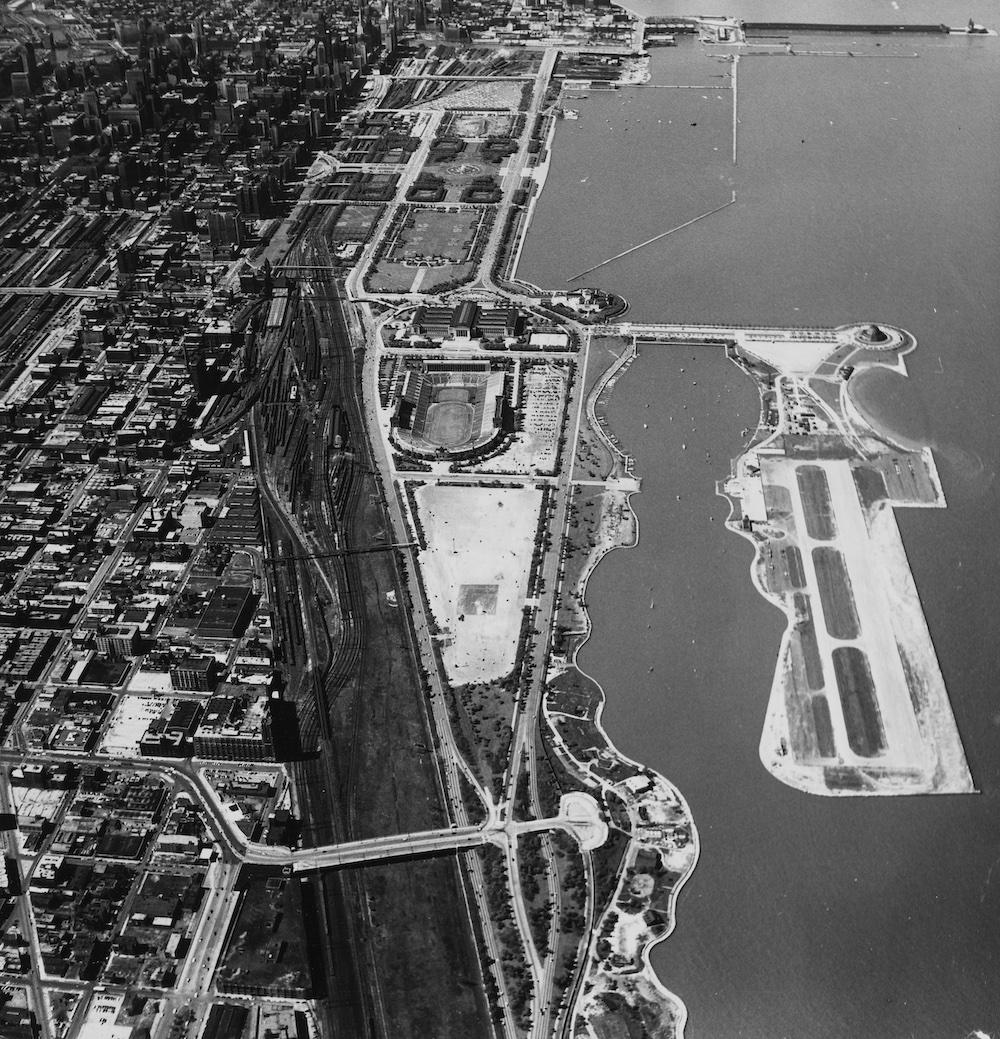Revisiting the Biting Articles That Branded Chicago the "Second City"
Daniel Hautzinger
December 15, 2022

Chicagoans proudly reclaim insults as their own. “It may well have been Chicago’s urban rivals who coined a nickname, [the “windy city,”], in derision, which has come to be adopted with pride,” writes Jonathan Boyd in the Encyclopedia of Chicago. Carl Sandburg turned the industrial city’s grit into a point of esteem in his famous poem, “Chicago.” Malört could be considered an insult to the taste, and yet Chicagoans eagerly buy and drink it—and force others to as well.
When New York City native A.J. Liebling wrote a series of articles about Chicago 70 years ago, they were published in The New Yorker and later a book under the belittling title “Second City.” Soon after, a group of young Chicago artists took the dismissive name as their own when they founded The Second City improv theater.
Liebling was familiar with this form of Chicago boosterism. In his infamous articles, which gave Chicago the “Second City” nickname, he noted a “first-or-nothing psychology” amongst Chicagoans, whom he found seemed to ruefully delight in the city’s reputation for gangsters and political malpractice. “The contemplation of municipal corruption is always gratifying to Chicagoans,” he wrote. “They are helpless to do anything about it, but they like to know it is on a big scale.”
“Every Chicagoan” was convinced “that he is being done,” Liebling proclaimed. Theater that came from New York City was assumed to be an inferior production or put on with phoned-in performances. (“As a theatrical center, [Chicago] is outclassed by Oslo,” Liebling wrote.) Society women wouldn’t dream of buying a dress in Chicago, suspecting that clothes in Chicago stores, even articles that hailed from New York City, had “been chosen in accordance with some patronizing New York notion of Chicago taste.” Chicagoans were convinced that crime bosses worked with (or for) the city government.
Liebling attributed this habit to what he perceived as Chicago’s decline and failure to live up to its promise as the second-biggest city in the country, a position it took up in 1890 and which Liebling believed it would soon cede to Los Angeles. (In fact, Los Angeles only surpassed Chicago in population in the 1990 census.) Chicago “has the personality of a man brought up in the expectation of a legacy who has learned in middle age that it will never be his,” he wrote. The “not-quite metropolis” was imbued with a “collective sense of disappointment.” Appalled by the isolationism espoused by Chicago corporate titans on the America First Committee during World War II, he eventually diagnosed it as a product of their place in the disappointing “second city”: “the mail-order giants and puffed-fluff kings have found themselves the leaders of a lost cause,” he wrote. “Their personal fortunes may be great, but the world has not gone as they willed it. Chicago’s bid for grandeur has failed, and they remain permanently dissident; whatever happens anywhere else is wrong.”
In 1949 and 1950, when Liebling briefly lived in the city, and still in 1952, when his “Second City” articles were published, Chicago was indeed in a sort of trough. The stockyards, one of Chicago’s most prominent industries, were declining as automation and cheap labor elsewhere led to the shrinkage of meatpacking in Chicago. The suburbs were just starting to take off, drawing industry, retail, and workers (especially white ones) out of the city; Chicago’s population was at its highest peak in 1950. “Upper- and lower-middle groups commute together, leaving behind them each night the exiguous skyscraper core and the vast, anonymous pulp of the city, plopped down by the lakeside like a piece of waterlogged fruit,” Liebling wrote.
That “skyscraper core” hadn’t been added to for almost twenty years. The tallest building in the city was the Board of Trade, which would only be surpassed in 1965 by the Richard J. Daley Center. Speaking of Daley, he was just the lowly Cook County Clerk in 1952. The current mayor was the forgettable Martin Kennelly, “a moving-and-storage man… who looks like a bit player impersonating a benevolent banker,” in Liebling’s words.
 Liebling described Chicago outside the Loop, pictured here from above in 1953, as "the vast, anonymous pulp of the city, plopped down by the lakeside like a piece of waterlogged fruit." Photo: Chicago History Museum, ICHi-015033; Calvin C. Oleson, photographer
Liebling described Chicago outside the Loop, pictured here from above in 1953, as "the vast, anonymous pulp of the city, plopped down by the lakeside like a piece of waterlogged fruit." Photo: Chicago History Museum, ICHi-015033; Calvin C. Oleson, photographer
But things were changing. The Prudential Building would be completed in 1955, becoming the first skyscraper built downtown since the Great Depression and starting a postwar construction boom that would again cement Chicago as a skyscraper innovator and capital. Passenger service would begin at O’Hare in 1955, too. That airport, along with the construction of the interstate highway system and expressways through Chicago, would pull more corporate headquarters and workers into the suburbs. Liebling’s contention that “Chicago after nightfall is a small city of the rich who have not yet migrated, visitors, and hoodlums,” would prove not quite false, if you added in the working class and poor people, especially Black people, who remained as white collar workers continued to leave for the suburbs.
Liebling recognized this widening division between poor and rich, white and Black, noting the overcrowded and “substandard” housing in Chicago and predicting that “the spillover of Negroes from their intolerably crowded neighborhoods into the scarcely less jammed wards around them sets the stage for the racial violence that is Chicago’s greatest present danger.” (A race riot had broken out in the western suburb of Cicero in the summer of 1951.)
He ridiculed the absurdity of Chicago politics and aldermanic prerogative, which prevented the construction of substantial amounts of low-cost housing that might alleviate the overcrowding, despite available funds from the federal government. “[E]very site lay within some alderman’s ward—a difficulty impossible to avoid, since all Chicago is divided into wards,” he cheekily wrote of each politician’s desire to avoid having the housing built in their ward. (He also joked that street parking was scant near the lakefront because aldermanic corruption allowed people to buy “no parking” signs that “insure that any man who pays for one will always have a place to park his car.”)
Liebling profiles a prototypical alderman, Paddy Bauler, who describes the importance of maintaining a vote-getting Democratic machine with the motto, “Everybody gets something.” “People you meet at a party devote a great deal more time than people elsewhere to talking about good government, but they usually wind up the evening boasting about the high quality of crooks they have,” Liebling wrote, skewering what are now known as lakefront liberals. “Intellectual Chicagoans are all desperately earnest,” but “the wards are unaffected by anything the people in those houses think or say.”
But Liebling reserved his greatest ire for an alderman who had left that position for other things: Colonel Robert R. McCormick, the owner and publisher of the Chicago Tribune. Liebling, a journalist himself who had reported from Europe during World War II, spilled lots of ink lamenting the quality of Chicago newspapers. He also fundamentally disagreed with McCormick’s isolationism and anti-government stance. As someone who later wrote, “Freedom of the press is guaranteed only to those who own one,” Liebling especially abhorred McCormick’s heavy-handed editorials in the Tribune and his weekly educational radio broadcasts. “His pessimism weighs heavily on his city,” he wrote of McCormick, blaming the publisher in part for what he saw as Chicago’s resignation to its perceived decline.
Perhaps because of Chicago’s supposedly lackluster newspapers, the city also seemed to Liebling to lack talented writers. Whereas it was once home to a literary renaissance that included Carl Sandburg, Sherwood Anderson, Edgar Lee Masters, Ben Hecht, and Harriet Monroe, now only Nelson Algren was left—and Liebling was constantly introduced to him at parties, as if he was the only writer worth meeting.
Other things lacking in Chicago: an opera company (the Lyric Opera would be founded in 1952); impressive sports (“The fans don’t want to believe in their teams,”); reliable garbage collection; water that tastes good; and decent restaurants (although there is an “amazing” number of saloons, which “assume that nobody likes liquor, and that to induce the customers to purchase even a minute quantity, they have to provide a show.”) It all combined to make Chicago not a “big city” but “merely a large place,” the meager skyline “a theatre backdrop with a city painted on it” and the Loop “a small city surrounded by a boundless agglutination of streets, dramshops, and low buildings without urban character.”
Talk about an insult. Chicagoans may not have been able to reclaim such a winding peroration as their own, but the city did prove Liebling wrong on some points in the coming decades, especially architecture and dining. On many others, however—particularly political misdeeds and racial division—his biting criticism still cuts deep.







